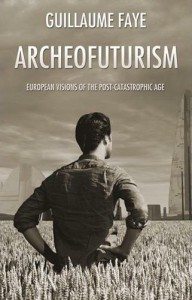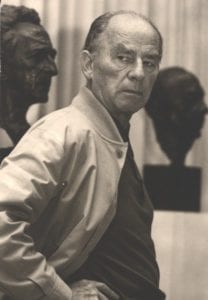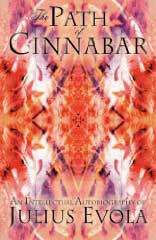 The Laws of the Military Houses
The Laws of the Military Houses
In the Roman Empire and other universal states in the days of their decline, attempts were made to arrest the course of deterioration by “freezing” an existing legal or social situation. The Tokugawa Shogunate in Japan was perhaps unique among universal states in applying this prescription of “freezing” from first to last and in achieving the tour de force of arresting change in the outward forms of social life (though not, of course, in the inward realities) over a span of more than 250 years.
In the domain of law the Tokugawa régime, so far from regarding equality before a uniform law as being a desirable ideal, exerted itself to accentuate and perpetuate a caste division between the feudal aristocracy [daimyōs] and their [samurai] retainers on the one side and the rest of the population on the other which was one of the worst of the wounds that the Japanese Society had inflicted on itself during a foregoing Time of Troubles. The cue was given by Tokugawa leyasu’s predecessor and patron Hideyoshi in an edict of A.D. 1587 (popularly known as “the Taiko’s Sword Hunt”) [Taikō was a title given to a retired kampaku, or adviser to an emperor, and is often applied to Hideyoshi] ordering all non-samurai to surrender any weapons in their possession.
The recently and arduously established central government further sweetened the pill for the feudal lords whom it had deprived of their long-abused de facto local independence by leaving them a very free hand to maintain and develop as they pleased, in all matters that the central government did not consider pertinent to the preservation of its own authority, the variegated “house laws” which the ruling family of each fief had gradually hammered out and enforced, within the limits of its own parochial jurisdiction, during the later stages of the foregoing Time of Troubles, particularly during the fifteenth and sixteenth centuries of the Christian Era.
The edict entitled “the Laws of the Military Houses” which Tokugawa leyasu promulgated in A.D. 1615, on the morrow of his crushing retort to the last challenge to his absolute authority, “is a document which, like the formularies and ‘house laws’ of earlier times, is not so much a systematic collection of specific injunctions and prohibitions as a group of maxims, in somewhat vague language, supported by learned extracts from the Chinese and Japanese classics.” [This quotation and those that follow are from Sansom, Sir G.: Japan, A Short Cultural History (London 1932, Cresset Press).]
“This ‘Constitution’ … was regarded by the Shogunate as fundamentally unchangeable. It was re-affirmed by each shogun on his succession, in a solemn ceremony attended by all his vassals; and, though circumstances sometimes forced them to alter it in detail, they never admitted or even contemplated any deviation from its essential principles, and they punished without mercy any breach of its commands.”
This in spite of the edict being vaguely-worded and in spite of the freedom allowed to the feudal lords in particular matters.
It is noteworthy that under this ultra-conservative régime a tendency towards the standardization of local laws did nevertheless declare itself.
“Within their own fiefs the barons enjoyed a very full measure of autonomy. … But the Shogunate, without interfering, used to keep a sharp watch on the conduct of the feudatories, and it was one of the chief duties of the censors (metsuke) and their travelling inspectors to report upon affairs in the fiefs. For this and similar reasons there was a general tendency among the daimyō to assimilate their administrative and judicial methods to those of the central authority, and the legislation in which the Shoguns freely indulged soon began to displace the ‘house laws’ of the fiefs where it did not clash with local sentiment and habit.”
The prestige of the Imperial office in Japan
We have […] to explain why an Imperial House which exercised effective authority for less than three hundred years after the reorganization of the Imperial Government on a Chinese model in A.D. 645 should have survived for another thousand years in impotence as the sole fount of honour and dispenser of legitimacy. All the de facto rulers of Japan, since the time in the tenth century of the Christian Era when the Imperial Government had lost control, had felt it necessary to do their ruling in the Emperor’s name. At the time of writing, an utterly victorious occupying Power was finding it convenient to administer the country through a native Japanese Government acting in the name of the Emperor of the day.
This extraordinary vitality of the prestige of the Japanese Imperial House had been attributed by the Japanese themselves to their own official belief that the Imperial Family were descendants, in unbroken line, from the Sun Goddess Amaterasu. But, though, no doubt, this myth went back to the dawn of Japanese history, the deliberate exploitation of it for a political purpose seemed to be no older than the Meiji Period, when the new masters of Japan, who had wrested the de facto power from the last of the Tokugawa shoguns in A.D. 1868 and had appropriated to themselves the manipulation of the indispensable Imperial puppet under pretence of “restoring” him to the status enjoyed by his forefathers, were concerned to enhance the prestige of the institution in whose name they had to rule.
Moreover, the Emperor Hirohito did not seem to have forfeited his hold on the allegiance of the Japanese people by his public declaration to them, on New Year’s Day 1946, that he was not a god but a man. [Footnote: In his rescript of that date, the Emperor Hirohito declared: “The ties between us and our people have always stood upon mutual trust and affection. They do not depend upon mere legends and myths. They are not predicated on the false conception that the Emperor is divine and that the Japanese people are superior to other races and fated to rule the World” (English text published in The New York Times, 1st January, 1946).] It therefore looked as if there were some firm foundation, other than the Sun Goddess myth, for the immense esteem which the Imperial House had continued to enjoy through all vicissitudes of their fortunes and Japan’s, and this foundation might perhaps be discovered in the historic “reception”, in A.D. 645, of the Chinese Imperial Constitution of that age.
This bureaucratic system of administration was far too elaborate and refined to be practicable under the rude conditions of contemporary Japanese society. Yet its exotic character, which doomed it to a speedy failure in the field of practical politics, may have been the very feature that ensured its age-long preservation as a palladium of the Japanese polity; for the Japanese Imperial Constitution of A.D. 645 was modelled on that of the then reigning Chinese dynasty of the T’ang, and the T’ang Empire had been a resuscitation of the Han Empire, which had been the Sinic Society’s universal state. On this showing, the Japanese Imperial Office in the twentieth century of the Christian Era was living on political capital that had been accumulated by Han Liu Pang in the second century B.C.
Social change under the Tokugawa Shogunate
The Tokugawa régime [1603-1868] set itself to insulate Japan from the rest of the World, and was successful for nearly two and a half centuries [just over two if you reckon from 1641 to 1853] in maintaining this political tour de force; but it found itself powerless to arrest the course of social change within an insulated Japanese Empire, in spite of its efforts to petrify a feudal system, inherited from the preceding “Time of Troubles”, into a permanent dispensation.
“The penetration of money economy in Japan … caused a slow but irresistible revolution, culminating in the breakdown of feudal government and the resumption of intercourse with foreign countries after more than two hundred years of seclusion. What opened the doors was not a summons from without but an explosion from within. … One of [the] first effects [of the new economic forces] was an increase in the wealth of the townspeople, gained at the expense of the samurai and also of the peasants. … The daimyō and their retainers spent their money on luxuries produced by the artisans and sold by the tradesmen, so that by about the year [A.D.] 1700, it is said, nearly all their gold and silver had passed into the hands of the townspeople. They then began to buy goods on credit. Before long they were deeply indebted to the merchant class, and were obliged to pledge, or to make forced sales of, their tax-rice. … Abuses and disaster followed thick and fast. The merchants took to rice-broking, and then to speculating. … It was the members of one class only, and not all of them, who profited by these conditions. These were the merchants, in particular the brokers and money-lenders, despised chōnin or townsmen, who in theory might be killed with impunity by any samurai for mere disrespectful language.
Their social status still remained low, but they held the purse and they were in the ascendant. By the year 1700 they were already one of the strongest and most enterprising elements in the state, and the military caste was slowly losing its influence.” [Square brackets in the original.] [Footnote: Sansom, G. B.: Japan: A Short Cultural History (London 1931, Cresset Press), pp. 460-2. See further eundem: The Western World and Japan (London 1950, Cresset Press), chaps. ix-xi (pp. 177-289).]
If we regard the year 1590 of the Christian Era, in which Hideyoshi overcame the last resistance to his dictatorship, as the date of the foundation of the Japanese universal state, we perceive that it took little more than a century for the rising of the lower layers of water from the depths to the surface to produce a bloodless social revolution in a society which Hideyoshi’s successor Tokugawa leyasu and his heirs had sought to freeze into an almost Platonically Utopian immobility. This social upheaval was a result of the operation of internal forces within a closed system, without any impulsion from outside the frontiers of the Japanese universal state.
The extent of the resultant change is impressive – and the more so, considering that, for a universal state, the Tokugawa Shogunate was culturally homogeneous to an unusually high degree. Apart from a little pariah community of Dutch business men who were strictly segregated on the islet of Deshima, the only heterogeneous element in the otherwise culturally uniform Japanese life of that age was a barbarian Ainu strain that was socially impotent in so far as it was not already culturally assimilated.
But the Dutch were not the only people permitted to trade: the Chinese traded, too, and lived in a special quarter of Nagasaki.
The Tokugawa Shoguns ruled from Edo or Tokyo. The rise of the merchants was the making of the city.
Deshima has since been absorbed by reclaimed land, becoming part of Nagasaki, but the settlement has been restored and can be visited.
The strictest period of isolation (sakoku) lasted from 1641, when Deshima was estabished, to 1853, when Commodore Perry arrived in Edo Bay with his warships. But a considerable branch of learning – Rangaku (literally “Dutch learning”, by extension “Western learning”) – was developed by Japan through its contacts with the Dutch enclave. Dutch learning allowed Japan to keep abreast of Western technology and medicine and was an incubator for the vaster project of learning and absorption which began after 1853 and gained strength after the Meiji restoration. It remained illegal for Japanese to leave Japan until after the restoration.
Originally published in A Study of History, Vol VII, OUP, 1954
The article was assumed from Synergies européennes.








 ***
***
Nejnovější komentáře